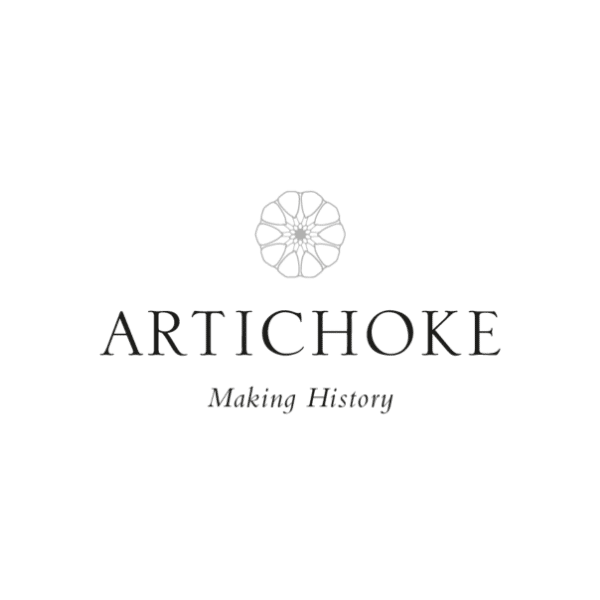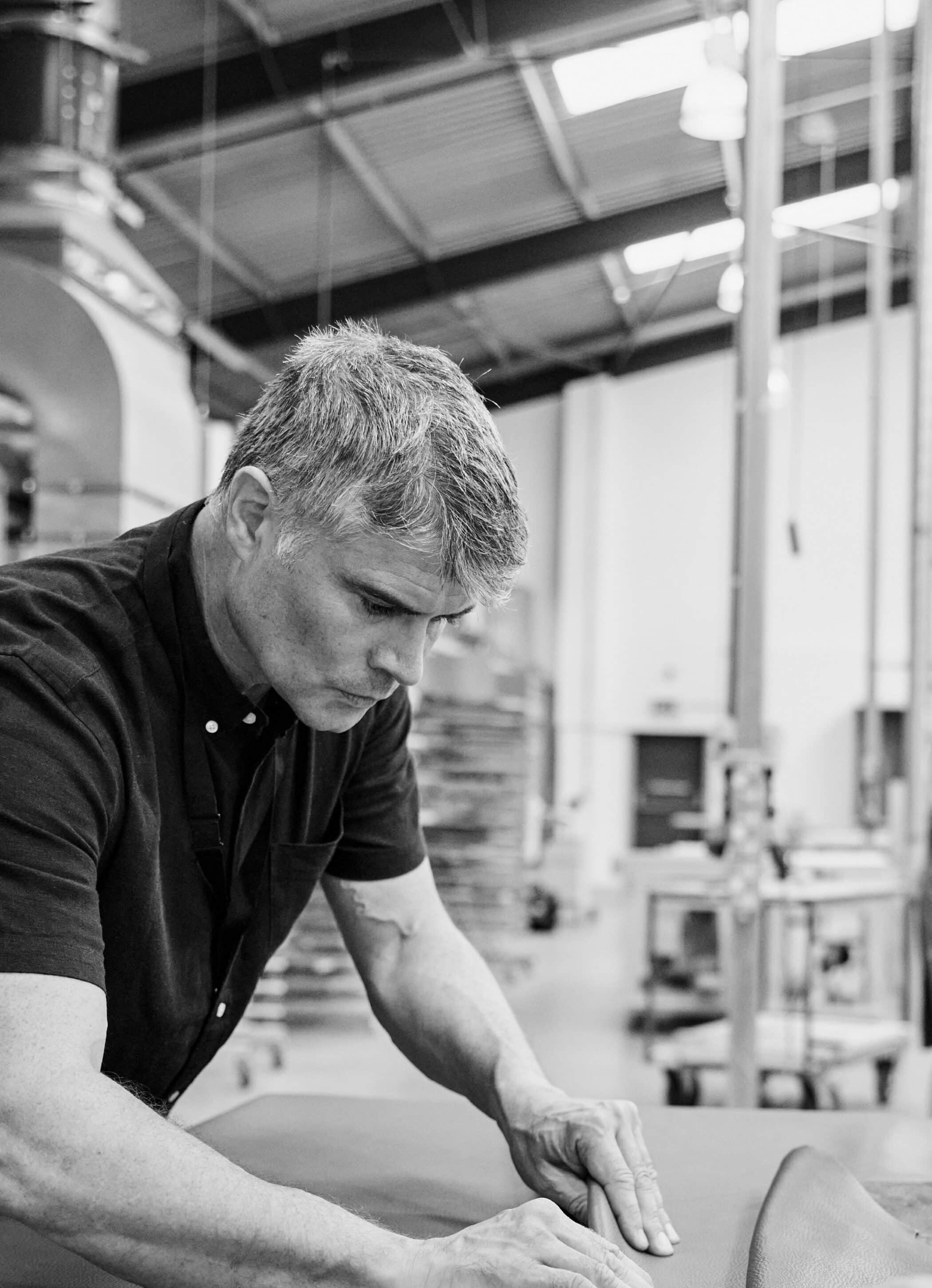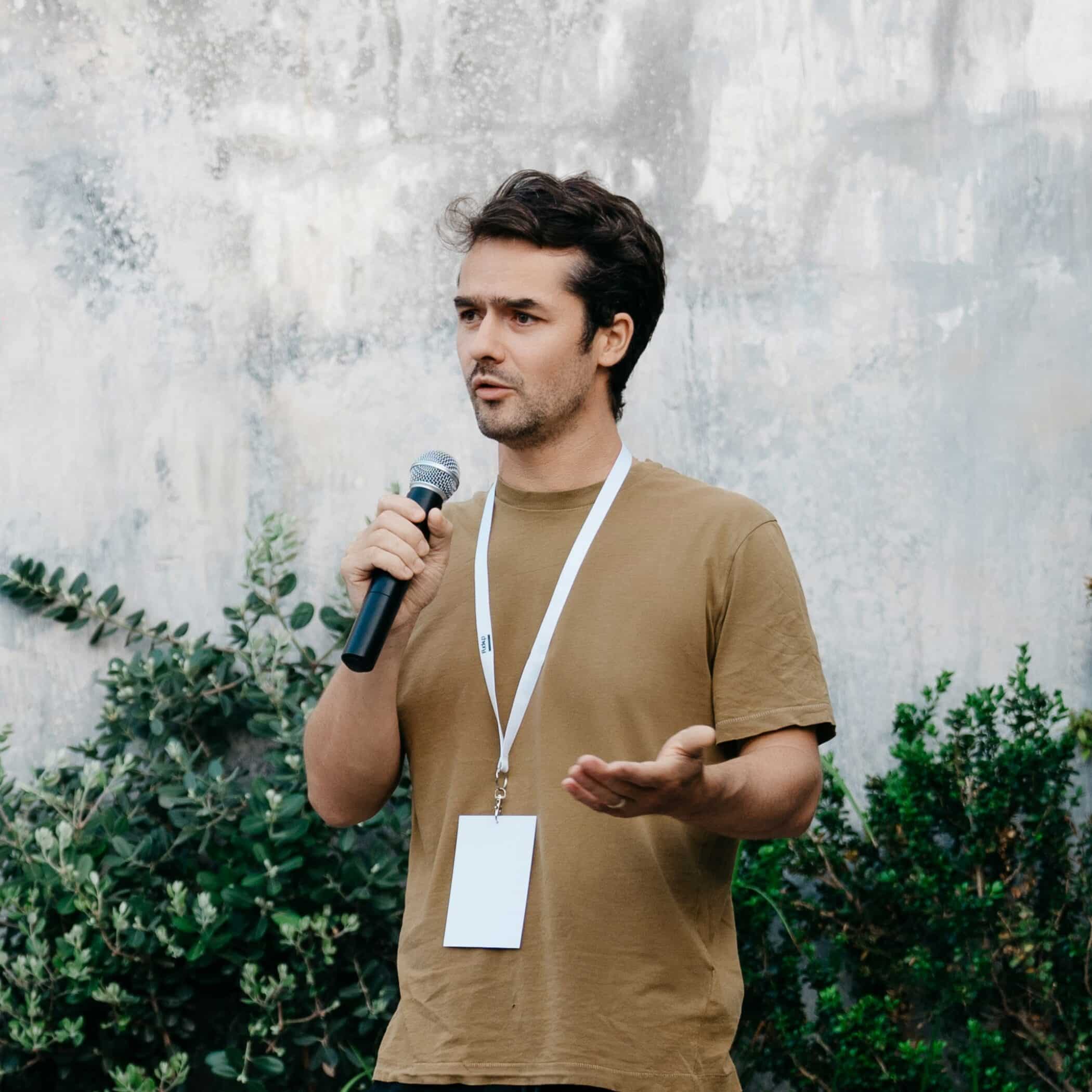From microscopic marine filming to multimillion-pound interiors, Tim Hellier’s career has taken an extraordinary path. As Technical Director at Artichoke, he now oversees some of the most intricate and beautiful joinery and interior design projects in Europe. He reflects on craftsmanship, leadership, and the creative freedom he found by choosing to make things – and making them well.
What was your time at Radley like? Did it influence your creative path?
I was at Radley from 1984-89, in H Social under Mr Usherwood. I was quite academic and musical, but I’d say I was a jack of all trades, really. I found Radley difficult in some ways, and I’ve sometimes compared it to being in the military or in prison – you couldn’t escape your peer group. But there was also real joy. The Sewell Centre was huge for me, and so was rowing. I was Captain of Boats, and those experiences gave me a real sense of ownership and purpose. But yes, I came out with a need to prove myself – not because I’d gone to a posh school, but for who I actually was. And design, making things – that creative thread was there throughout.
How did you get into design and craftsmanship after finishing school?
After Radley I travelled with my friend Chris Parks (1984, A), whose father Peter Parks co-founded Oxford Scientific Films. We spent a year travelling the world, visiting film-maker colleagues of Peter’s and taking landscape photographs. When we returned, we held a photographic exhibition at the Sewell Centre, and that was a real turning point. I then started at Imperial College studying mechanical engineering but spent more time rowing than studying and realised that I had no passion for it. So, I switched to Kingston Polytechnic, where I studied 3D furniture and product design. That really set me on my path.
Both during the course and after, I worked for Peter’s new company Image Quest 3D. We specialised in creating stereoscopic imagery for the natural world, and most specifically microscopic marine life. It was extraordinary – we worked in the giant Imax format. We built our own optical rigs and worked in Bermuda and on the Barrier Reef. We even contributed to the BBC’s Blue Planet, filming microscopic marine life with enormous washing-machine sized cameras. When the documentary landscape started to change, I pivoted, and eventually I co-founded a design and interiors company called Hellier Peach. We did 30 or 40 bespoke projects, mostly in London, from kitchens to full residential extensions.
And how did you end up at Artichoke?
That was in 2006 or 2007. I came across their website while looking for inspiration for a wardrobe project and I was immediately struck by their work. I rang them on a Friday afternoon and got Bruce Hodgson, the founder. He needed someone to run the delivery and installation side of the business. Two months later, I joined. I thought it would be 18 months. It’s been nearly 20 years!
What exactly is Artichoke, and what does your role involve?
We make high-end, bespoke interiors – kitchens, dressing rooms, libraries – for incredibly beautiful homes. Often historic ones. Projects can easily run to £4–5 million. The materials and fittings have a cost of their own, but at the level we are working at, what we sell is hours: it’s 2,000 hours of expert craftmanship in a workshop. It’s theatre, it’s art, and it has to be flawless.
We work directly with clients, not as subcontractors, and we design everything, from architectural joinery to furniture. I’m the Technical Director, project delivery, installation, and client relations. I still pick up the tools from time to time, and I travel a lot – this week it’s San Tropez. It’s varied: site surveys, planning, team logistics, meeting clients. No two days are the same.
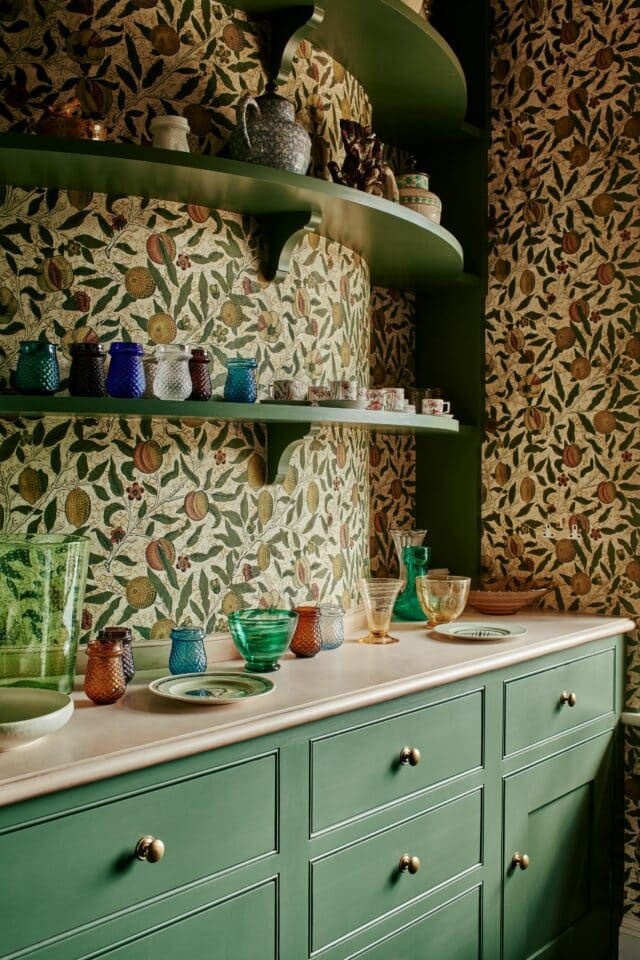


Examples of Artichoke’s work: – Pantry in a Victorian Country House, Guest Bedroom in a Gentleman’s Apartment, and The Grand Study in a Swiss Historic Estate.
What is the company’s mission?
It’s about excellence – showing that British manufacture and craftsmanship can be world-class. We work hard to uphold that in everything we do. It’s not just about high-end design; it’s about doing it properly. Using traditional techniques. Creating things that last 200 years, not 10. And giving houses the interiors they deserve – interiors with soul, not flat-pack pastiche. What we do is about passion. If you haven’t got that, you won’t last long in this world.
Do you have a favourite project or a particularly challenging brief you could share?
There are lots. One project in Hampstead comes to mind – a metal-framed house with a pod-like space between rooms, all in precision veneer. It required working across 15–20 metres to within millimetres. It was a huge challenge. Another was in Cortona, Italy. The house had been a hotel, then derelict. We restored it, blending Tuscan and English design. We did 85 door sets, huge walnut pivot doors, hand-polished … transitions between stone corridors and timber rooms. It was like staging a theatre production inside a house. Every inch of a great interior should carry its own language – something that makes you gasp when you step inside.
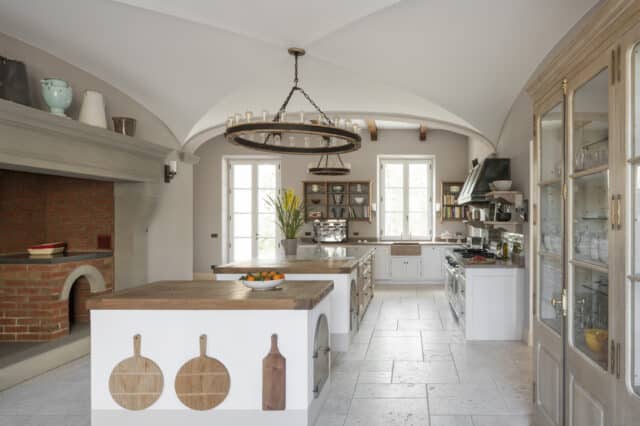
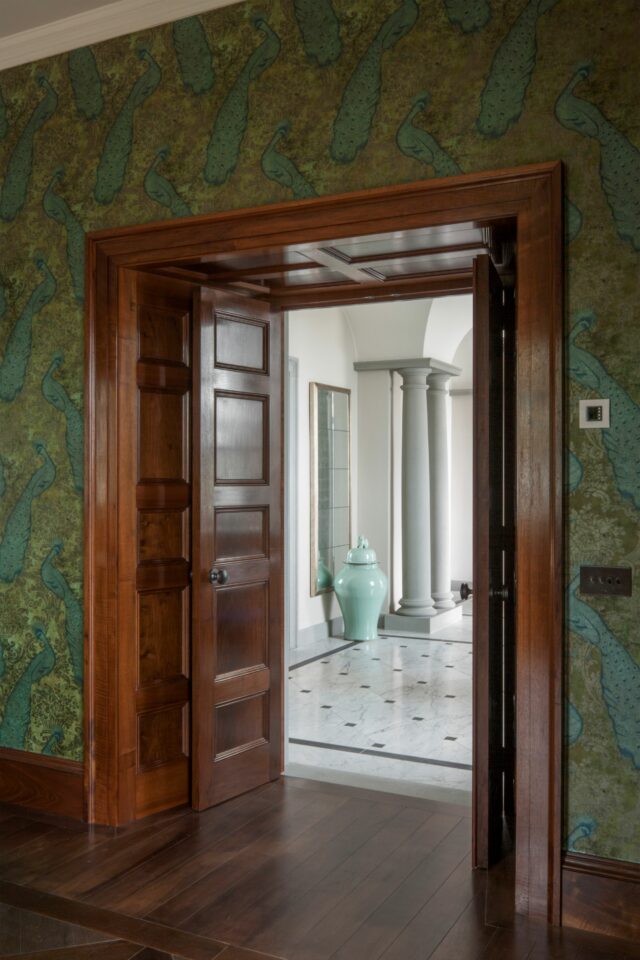
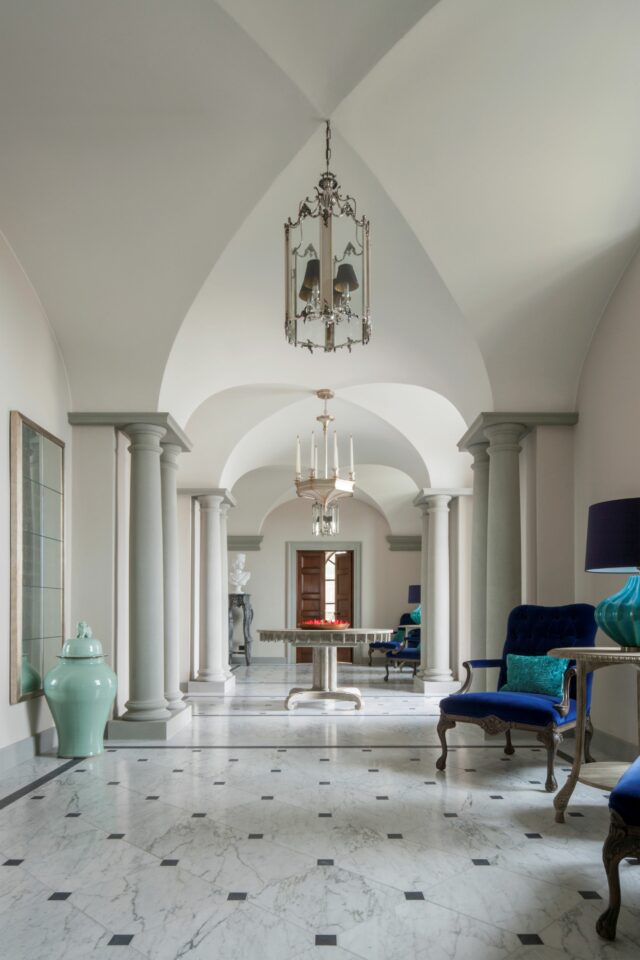
The Kitchen and Hallways inside the house in Tuscany.
What materials do you work with? How do you weigh heritage and sustainability?
We mostly use European oak, walnut, and some fruit woods. We avoid MDF and are cautious with tropical hardwoods. A lot of our timber comes from managed forests in Europe, including larch, which gives texture. We plan carefully to reduce waste and donate offcuts to school workshops. Solid timber has a surprisingly good carbon footprint. But more than that, we use it responsibly – and proudly.
Artichoke clearly has a deep respect for heritage. How do you blend that with a modern desire for all the mod-cons?
It’s a fine balance. We’re not trying to recreate Downton Abbey. We modernise with sensitivity. Kitchens, for example, used to be downstairs, out of sight, but now they’re often the showpiece of a home. We integrate appliances, honour the architecture, and use old techniques like mortise and tenon joints. Our goal is always to make the inside of a house live up to the exterior – to take your breath away.
What do you consider ‘good leadership’, and how do you bring your team together?
I learned leadership early, as Captain of Boats at Radley. My style is lead-by-example: I still pick up tools, work alongside the team. It’s about honesty, consistency, and communication. We run monthly company meetings where anyone might speak, and we encourage the cabinetmakers and designers to feel able to represent us in public. We want everyone to own their part in the company. Communication is key – not just within teams but across disciplines, and with clients. We need our staff to be able to communicate people at all levels – from an on-site electrician to a high-net-worth client. Any one of our staff should be able to shake a client’s hand and show them around. Communication is everything.
What advice would you give to young people interested in design, craft or manufacture?
Be brave. Follow what you’re passionate about – inspiration and creativity won’t come to you; you have to go out and find them. That passion will fuel you. University can be great, especially for structure and social growth. But apprenticeships and on-the-job learning are just as valuable. Learn CAD, get your hands dirty. Travel. Make things. Don’t wait for permission. And most of all, prove to yourself that your skills are yours – not just inherited opportunity. Learning to be a really good cabinetmaker was huge to me, because that came from me. It didn’t come from anywhere else. There’s a thing in there about freedom – it was an important moment for me: finding myself after school.
And finally, if you could build a home for yourself from scratch, what would you include?
Timber. Always timber! Natural materials that bring warmth and texture. I love painted larch panels, burr walnut, anything with real grain and character. I’d also want some jewel-like rooms – smaller spaces with exquisite detailing. And, if I had the money, art, too. Good art on the walls really changes how you feel. But ultimately, it’s the timber that would make it home for me – the smell of it, the way it ages, the life it carries.
To find out more about Artichoke, take a look at their website: https://artichoke.co.uk
